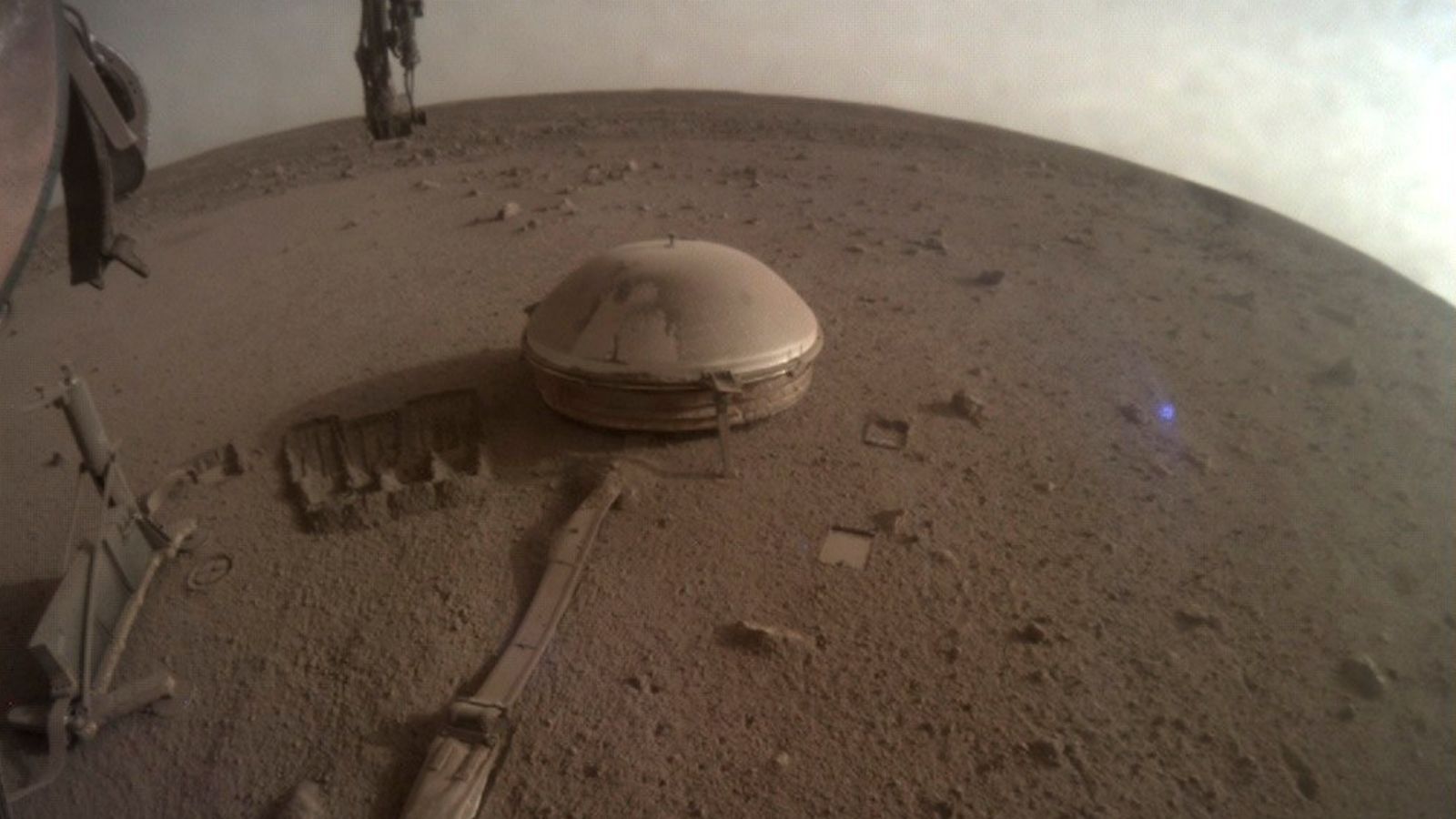This may be the last ever image sent from NASA’s Mars InSight spacecraft.
After a four-year mission on the red planet, the robotic lander – which famously snapped the first “selfie” ever taken on Mars – is powering down.
Thick windblown dust has covered InSight’s solar panels, with NASA expecting to lose contact with the probe soon.
The American space agency posted the news on the craft’s Twitter page, saying: “My power’s really low, so this may be the last image I can send.
“Don’t worry about me though: my time here has been both productive and serene.
“If I can keep talking to my mission team, I will – but I’ll be signing off here soon. Thanks for staying with me.”
NASA announced the £630m InSight project 10 years ago as a follow-up to its successful Curiosity rover.
The InSight lander’s goal was to discover how Mars was formed, with the aim of giving scientists a better understanding of how rocky bodies like the Earth were created.
Before that, the spacecraft had to successfully make the 300 million-mile journey to Mars before enduring “seven minutes of terror” to descend to the surface.
Just 40% of missions to the red planet have safely made it through the thin atmosphere.
A combination of a heatshield, parachute and retrorockets helped slow InSight from 13,000mph to 5mph in just six minutes to allow it to land on the Elysium Planitia, a featureless plain just north of the location of the Curiosity rover.
Once it unfurled, the craft rammed a temperature probe five metres into the surface to measure the heat flowing from the planet’s core.
Read more
NASA’s Orion spacecraft splashes back down to Earth after successful moon mission
Astronauts will be ‘living and working on the moon’ within a decade, says NASA
Five months after landing, InSight’s quake monitor recorded a faint rumbling. NASA’s scientists concluded that it came from within the planet, dubbing it a “Marsquake”.
One of InSight’s chief accomplishments was establishing that the red planet is, indeed, seismically active, recording more than 1,300 marsquakes.
The recording kicked off a new research field of “Martian seismology”, NASA said, which could help find out more about how rocky planets were formed.
It also measured seismic waves generated by meteorite impacts, revealed the thickness of the planet’s outer crust, the size and density of its inner core and the structure of the mantle that lies in between.
But there was also time for some fun. The craft famously snapped the first ever “selfie” taken on Mars, using a camera attached to its robotic arm to beam a photo all the way back to Earth.
NASA’s Jet Propulsion Laboratory (JPL) near Los Angeles will continue to listen for a signal from the lander, just in case.
But hearing from InSight again is unlikely, experts say.
The three-legged stationary probe last communicated with Earth on 15 December.




